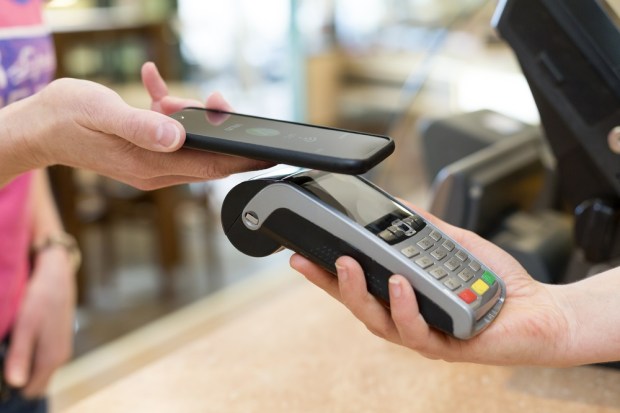Why Connected Consumers Crave Contactless Payments

From barter, to cash, to eCommerce, and now, to contactless payments – even those enabled by voice command.
The steady drumbeat of tech has brought purchasing from bills and coins to cards and contactless payments – done across all manner of devices and through pushes, taps, swipes and waves, at any time. In the 21st century, commerce is not confined to the point of sale.
As discussed in the latest “How We Will Pay 2019” survey, done in collaboration between PYMNTS and Visa, the age of the connected consumer has dawned.
To that end, ownership of the key enabler of contactless payments – that would be smartphones, of course – is up, reaching 90 percent in 2019 versus 84 percent in 2018. In another example of tech ownership (paving the way for contactless payments), just under one-third of consumers, 31 percent, own voice-activated devices, up from 27 percent last year.
Along with the hardware comes interest in apps (the software, of course) – specifically, those applications that can help consumers embrace connected purchasing experiences, at 73 percent of those surveyed.
The study found that consumers’ interest in contactless payments was up 5.4 percentage points to 31.3 percent, versus 25.9 percent last year.
The interest in contactless cards, especially, is tied to desire for faster (at 69 percent), more secure (43 percent) and more convenient (69 percent) payment experiences.
In paying for their retail purchases online and in store, in terms of the overall respondent pool, 9.6 percent used a voice-activated device, up from 7.7 percent; more than 23 percent used a mobile device with an app; and 17.3 percent used mobile devices, not including apps.
Delving Deeply Into Demographics
Demographics play a role in connected commerce. The study showed that super-connected consumers – at an average of 42 years of age and wielding more than seven connected devices, compared to the study’s average of just under five devices, and with annual earnings of more than $100,000 – are among the heaviest users of connected commerce.
Beyond the super-connected users, bridge millennials, at an average of 36 years of age and armed with six connected devices, also have relatively high spending power. As much as 40 percent of this cohort earns more than $100,000 annually.
Both groups show a similar interest in contactless payments – 43.4 percent of the bridge millennials and 42.2 percent of super-connected consumers. They are clearly open to deploying technology in everyday spending, as more than 87 percent of the bridge millennials and more than 86 percent of super-connected consumers are “interested in new ways of shopping,” outpacing the 72.7 percent of the overall sample.
The two groups also put their money to work on an everyday level. The data shows that across an average of 14 daily activities conducted with technology by bridge millennials, more than six of them involved making a purchase. For the super-consumers, the average daily number of activities, at 12.5, featured 4.8 purchase-oriented activities. That far outpaces the average of 12.3 daily activities conducted by the sample, with 4.3 of them involving a purchase.
Contactless, too, seems to be more top of mind for those groups, as 43.3 percent of bridge millennials were interested, up from 35.4 percent; the 42.2 percent of interested super-connected consumers was higher than the 36.6 percent in 2018.
Super-connected consumers prized convenience of contactless payments at more than 73 percent of that group, compared to a bit more than 69 percent of bridge millennials. They also cited contactless payments as being faster than chip cards, an attraction noted by 71.6 percent of super-connected individuals and 65.7 percent of bridge millennials.
